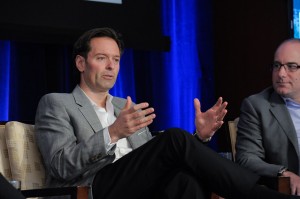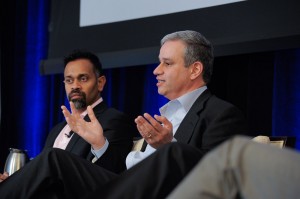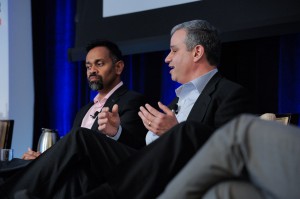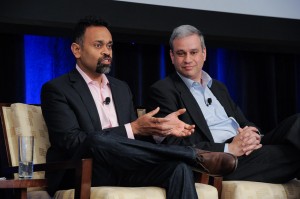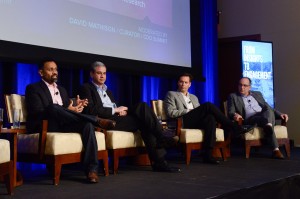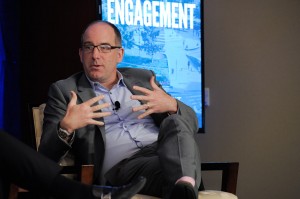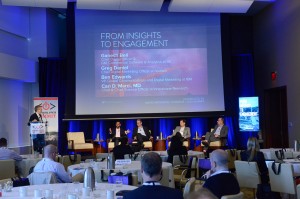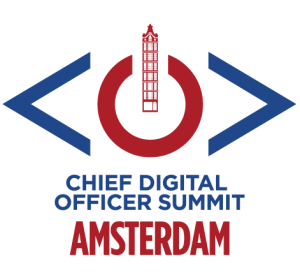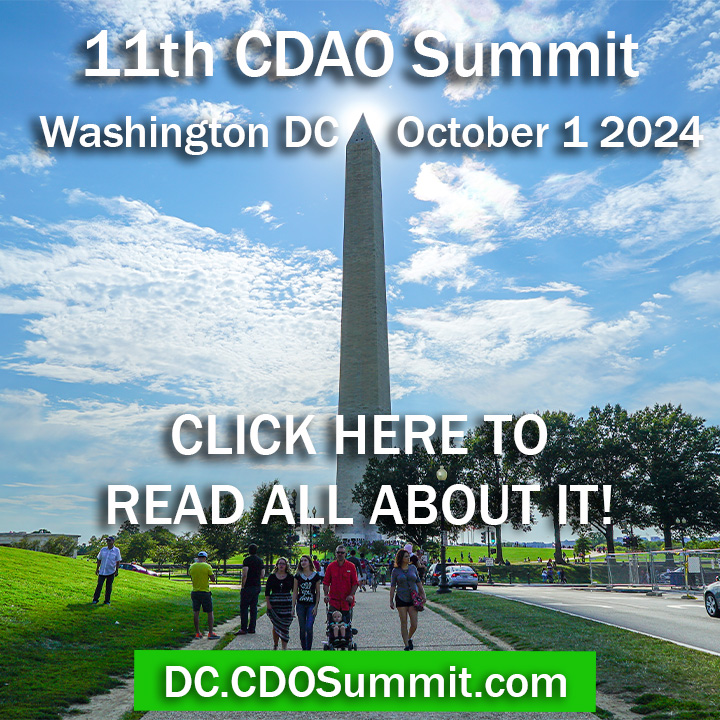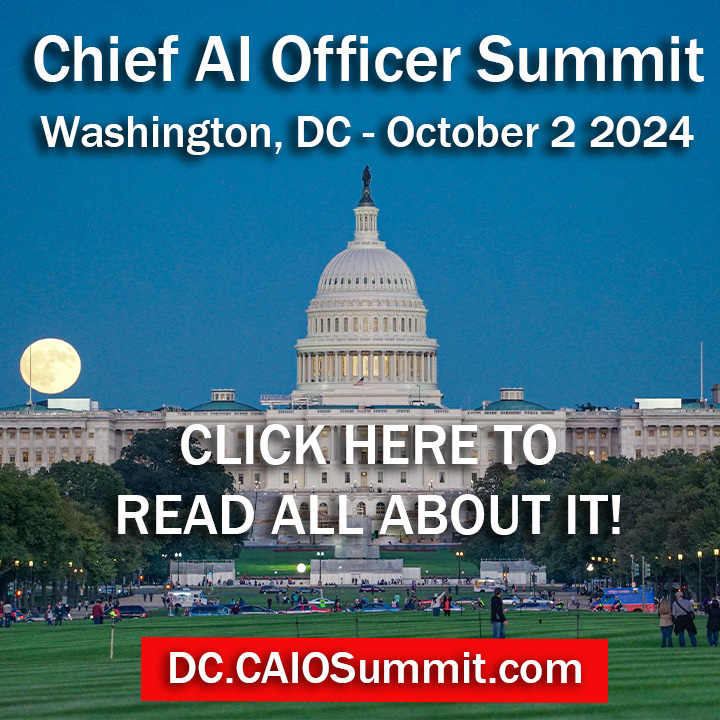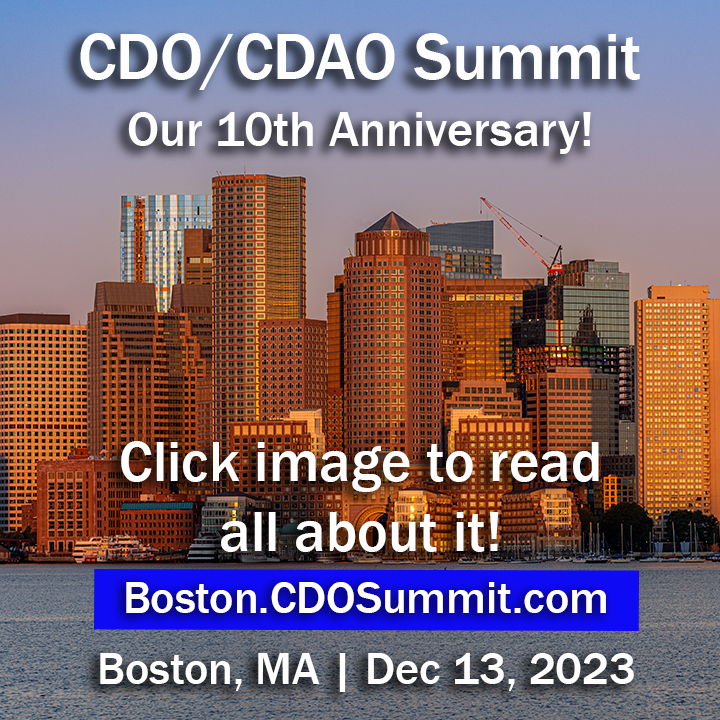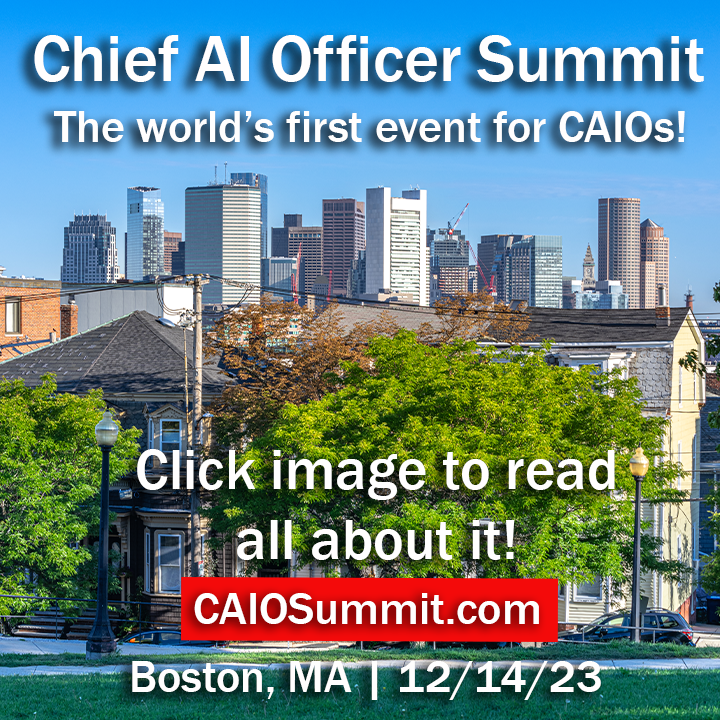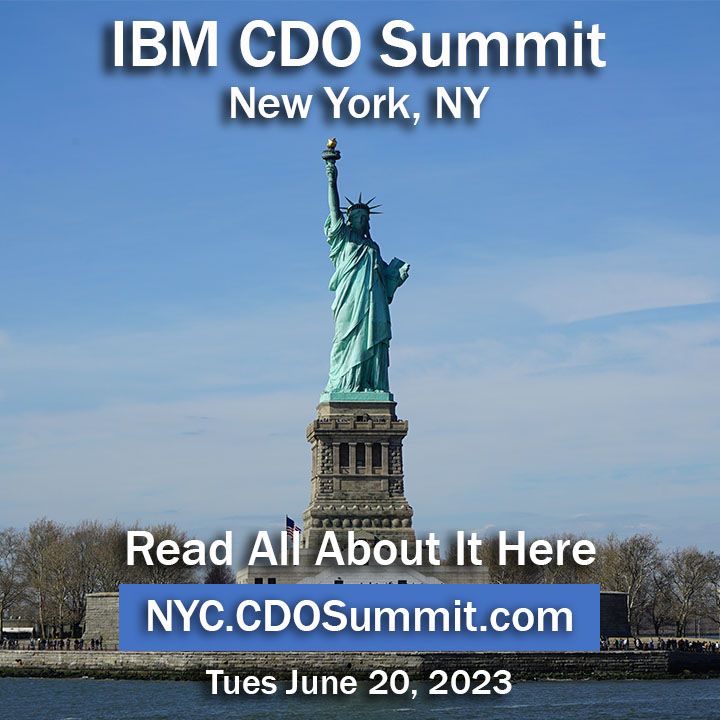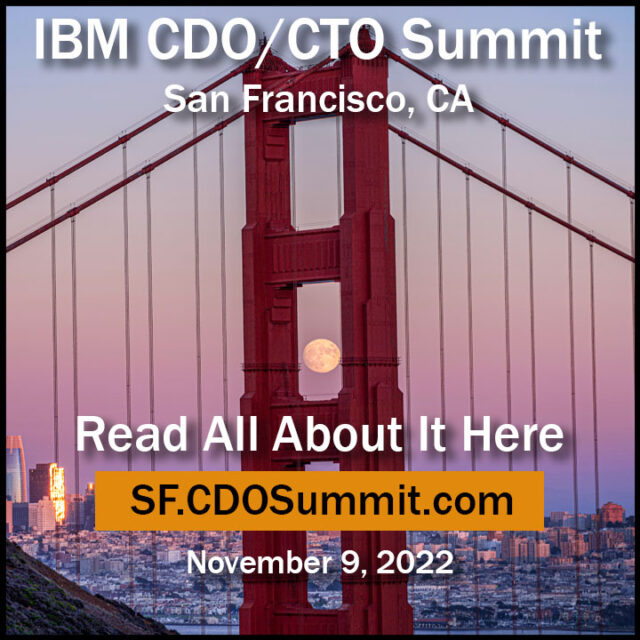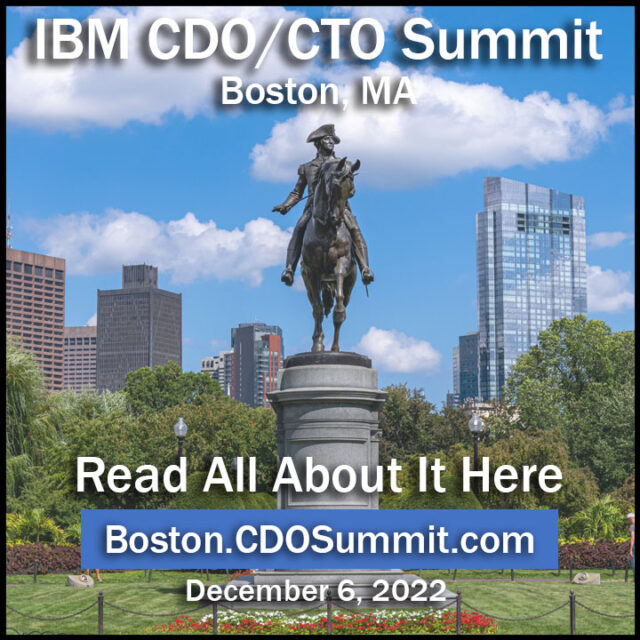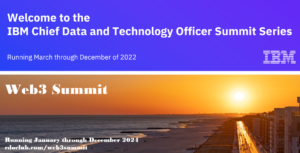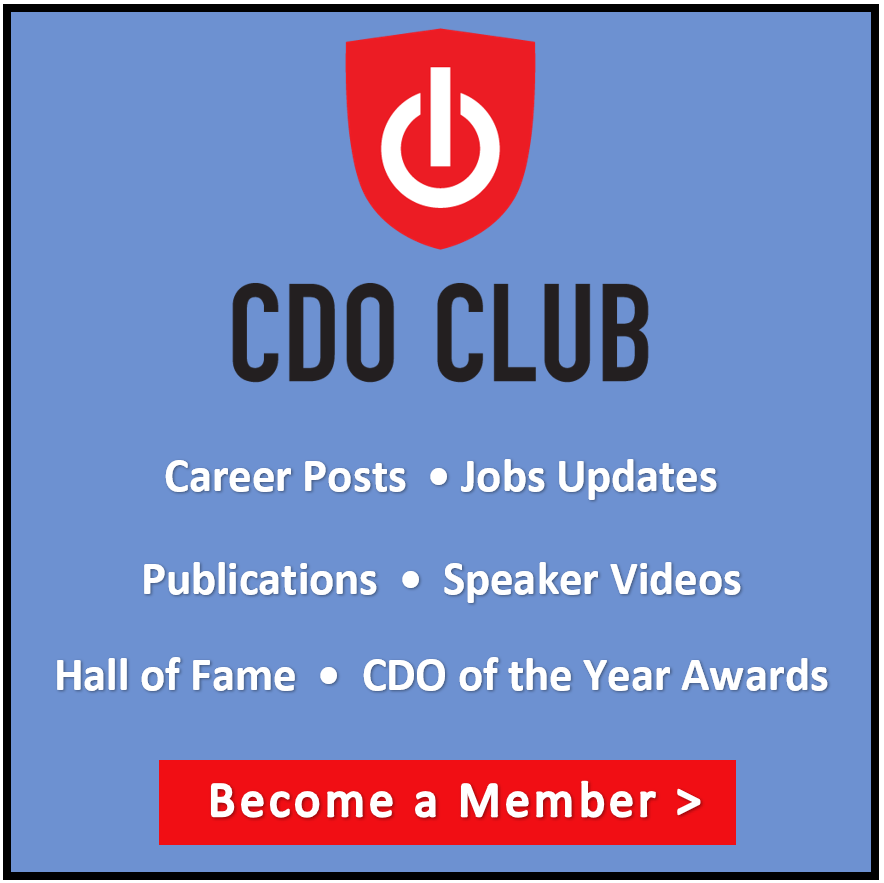Concurrent with the rise of the Chief Digital Officer has been the title of Chief Data Officer, a role that makes “specific use of data to give the right information to the right person at the right time,” said David Mathison while introducing the “Insights to Engagement” panel, held at the 2014 CDO Summit at the Time Warner Center in New York City on April 23, 2014.
The first Chief Data Officer was hired in 2003, around the same time as the first Chief Digital Officer. The former role has actually been around much longer, especially in data-driven companies such as Amazon, Google, Yahoo!, and Netflix, all of which acquired and used massive amounts of data to better serve their customers.
The financial downturn of 2008 and the resultant government pressure for the financial and banking sectors to be more responsible with their data fueled yet more hires in regulated industries; and “Open Data Initiatives” aimed at scaling up open data efforts across the Health, Energy, Climate, Education, Finance, Public Safety, and Global Development sectors have led to Chief Data Officer hires at the local, state, and federal level, including high level hires at the National Institutes of Health, the Federal Communications Commission, the Federal Reserve, and the US Army.
Today, companies and individuals have moved beyond cold, abstract analytics, instead bringing in “the human element,” said Mathison. The panel featured four speakers who provided a wide spectrum of perspectives on how companies and individuals are leveraging data to move from insights and analytics to deeper customer engagement.
Participants included, from left to right:
- David Mathison (Moderator): Curator at CDO Summit
- Ganesh Bell: CDO & GM at GE
- Greg Daniel: Chief Digital Marketing Officer at Nielsen
- Carl D. Marci: MD, Chair & Chief Science Officer at Innerscope Research
- Ben Edwards: Vice President, Global Communications & Digital Marketing at IBM
[bctt tweet=”From Insights to Engagement w CDOs frm GE @GaneshBell @Nielsen @gdani1 @IBM @BenEdw @CMBiometrics” via=”no”]
View the video below
One individual on the forefront of this convergence of data and social is psychiatrist Carl D. Marci, MD (that’s Medical Doctor, not Managing Director), Chair and Chief Science Officer at Innerscope Research. Tucked away in the same building where the CDO Summit was held is the Time Warner Media Lab, where the organization conducts cutting edge research on how to “get closer to consumers in a dynamic and evolving media landscape,” Marci said.
Analyzing subjects with the most advanced sensors and analytical technologies, Marci attempts to quantify engagement. But to do so he must answer, almost daily, what is engagement?
When asked, Marci laughed and replied, “I’ve actually sat on panels where a formal debate was set up between those on the side that think that we should just abandon the use of the word ‘engagement,’ because there are so many different definitions, and those on the side saying we should hold on to it.” He quickly took the side of having a very specific definition: “attention to something that emotionally impacts you.”
Marci gave a simple example. “If I take a glass of water and take a sip of it and put it down, I think we all agree I have to pay attention to it at some level, but am I engaged with it? Probably not,” he explained. “If I spill that glass of water on me in front of my new friends and in front of a group of people I never met before…I’m going to have a big spike in my emotional response…. Now I’m engaged in that moment, in a fundamentally different way. Which one do you think I’m going to remember two weeks from now?”
So how can companies and organizations get that level of emotional engagement from their viewers, readers, customers, employees, and even, yes, connected devices, considering the unprecedented amount of data available today?
Here are four radical ways to turn data insights into deeper engagement, provided by our panel:
1. Viewer Engagement: Using Neural Science Data to Understand Human Emotion
So what was a Harvard psychiatrist like Marci doing sitting in a digital marketing platform talking about neural science?
Marci uses a complex platform called Sensus to monitor people’s facial expressions, eye movement, and several other data inputs while they watch media to determine “what emotion they are expressing, and how deeply they’re expressing it…without asking them a single question,” he said. The device is drastically more effective and accurate than any focus group, and Marci said this is because the platform allows him to analyze nonconscious emotions that we cannot access with our conscious mind.
“Neuroscientists commonly say what we are consciously aware of may be less than 5%, 1%,” he said, “which means that most of our communications in the last decades and millennia have only been talking to one part of the brain.”
Marci founded Innerscope Research with partner Brian Levine while he was teaching courses at MIT. Levine was at the MIT Media Lab “building the first devices that could integrate multiple channels.”
“We are wired to connect with each other,” Marci said. “There are profound evolutionary reasons for that, and the same reasons we are wired to connect with one another, they’re not very discerning, so we also connect to objects.”
When they first started, they were afraid they would not find willing participants for the project, because people had to be placed in a bulky vest with wires and sensors. “It turns out that for about $50 people are willing to do just about anything, especially in a down economy!” Marci said.
Their research has been revolutionary for marketing and advertising, especially in overcoming the “second screen” problem.
Basically, the new generation of consumers is constantly doing something on a “second screen,” such as a cell phone, tablet, or laptop, even while watching television. “What makes you snap back to the TV? We literally measure this in the lab,” he said.
One possible solution is salience, meaning stimuli that make viewers look at the screen, though Marci warns salience is not effective without a relevant message.
One of the first studies conducted by them to resolve this issue was with NBC Universal in 2007, which was “terrified of the DVR and the idea of people skipping ads.” But research conducted by Innerscope found that brand impressions could be left even in fast forward, but only if the content is relevant to the consumer on an emotional level.
“I grew up in a world where a TV was an entertainment device, a computer was a production device, and a phone was a communication device. Now they’re just screens,” he said. “As bandwidth increases and more and more people are doing passive things on the second screen, that begins to look a lot more like the first screen.”
2. Audience Engagement: Using Data to Optimize Marketing and Advertising
When it comes to the intersection of data and audience measurement, it’s hard to think of a better example than Nielsen.
And thanks to Greg Daniel, who after just two years at the media research company has recently taken on additional responsibilities as Chief Digital Marketing Officer (the first in the company to acquire this title), the organization is moving far beyond the TV ratings for which it is best known. Instead, Daniel has a much more comprehensive role and strategy, and is concerned with “what people watch across various platforms, and also what people buy.”
Daniel said Nielsen refers to “advertising effectiveness” as reach, resonance, and reaction. An example would be “taking this data on the watch side and the buy side, and combining it together to help companies optimize their marketing in flight.”
Previously it took a lot of time for companies to adjust their advertising and marketing based on the ratings, but now they can tweak their campaigns almost in real time.
Nielsen provides ratings and reactions as soon as a show or advertisement hits the air, giving their clients the opportunity to react immediately, instead of waiting for the next ad cycle.
Another big change is using data insights to help companies better engage their audience. “To me it’s about content driving all of your channels, be it social media, email, online, or offline,” Daniel said. Nielsen is now tracking “Twitter TV ratings,” because, as he noted, “36 million people tweeted about television while they were watching last year.” One of his newest initiatives is finding out how to measure this new metric and find out what it means for Nielsen’s clients.
He warned, however, that content marketing is only done right “if it’s unique and really adds value and helps you earn a seat at the table of your clients or whatever constituents you’re looking to serve…if it is really helping them with their lives in a very meaningful way.”
“Don’t talk about what you want to say. What does your audience want to hear?” he advised that digital officers ask.
3. Industrial Engagement: Using Data from Connected Devices to Optimize Performance and Create Better Products
What value can data from machines and connected devices provide to our own organizations?
Ganesh Bell, the newly appointed Chief Digital Officer and General Manager of Commercial Software and Analytics at General Electric, leverages data to help GE add new value to its customers through optimized performance and better products.
Since GE builds everything from gas turbines to nuclear power plants and renewables, Bell has amassed a treasure trove of data arriving in the form of sensor inputs from all those machines. “It started with this digitalization journey of the business and looking for new value streams we can create for the customers,” he explained.
“By the year 2020 there’s going to be 20 billion devices connected,” including such diverse sources as cell phones and even buildings.
“A gas turbine that we make could generate about 500 gigabytes of data a day,” Bell said. “Even if your product happens to be physical, if you connect that all the way, you get a much bigger picture of engagement, not just externally but also internally.
“The amount of data is definitely interesting—and scary at the same time,” he admitted.
Having worked in software companies most of his life, Bell was asked by his previous customers “Why are you going to work at GE?” He answered, “The place is rife with ‘use cases.’ I can be in a software company and look at all the horizontal problems. Or I can go in a company where it has all the use cases. It’s a $145 billion company, more than 130 years old.”
To make the connection between insight and engagement, Bell has found an innovative solution at one of GE’s labs in San Ramon, California.
His team developed a special rig with 36 GoPro cameras, able to capture an industrial setting from a unique spherical perspective. Then, when 16 projectors display the video on the wall, he said, “You can surround yourself in immersive video, because that context and that environment is absolutely vital for you to reproduce what you would feel, how you would react given a particular piece of data, analytics, or even an app in a mobile setting.
“You can’t field test an app just by putting it in the hands of people; you have to immerse yourself in an environment,” Bell added. “That allows you to develop an empathy for the customer and the user, and so that allows you to create better products.”
4. Employee Engagement: Using Data to Optimize Employee Performance
Ben Edwards is on his fifth career now. He was previously in print journalism, strategic communication, digital media, and marketing, and is now Vice President of Global Communications and Digital Marketing at IBM.
“The title doesn’t really speak to [my roles],” he explained. “We do our work overwhelmingly in Web design and development,” as well as developing phone apps and digital services based on data.
Edwards does work externally for clients and, increasingly, internally, using the massive amounts of data acquired from a big company like IBM. The unique design lab he works in shares space with marketing developers, content strategists, and IBM design (responsible for some 3,000 software products), giving him unique access to insights and engagement across the organization.
“I deemphasize its organizational lines and emphasize methods and talent,” Edwards said. He focuses his efforts on extracting insight from hard data in ways that were never possible before.
“Our acid test is: Are we making our decisions based on the data?” he noted. “Professions that formerly relied on intuition and implicit knowledge and expertise are being confronted with new practices and methods that are empirical in nature and can give you the answer through data.”
One quick example of this changing philosophy can be found in how IBM does public relations. Previously, its communications specialists often tried to justify their reach by volume, sending lists of bloggers they influenced, he said. “Media being what it is today, these are very, very long lists, because anyone’s got a blog and I don’t know the value of that stuff…. What is the actual value that a PR professional is delivering? That’s what I want to know, in data, empirically.”
Raw data derived from social media analytics is one way to fill in the gaps and test engagement. In one experiment, Edwards gave the top 300 executives at IBM a goal: to adopt social media internally as a way of engaging their teams. He said the project was “really a profound cultural transformation for a group of 50- to 60-year-olds who have led in a very particular style for a very long time.” He offered them coaching and advice, but to no avail.
Then he used analytics, by building a leaderboard that measured all the executives’ reach, engagement, and amplification within their own team.
Then he published it to the chairman once a month. “Suddenly the phones were ringing, [with people asking] ‘how do I improve it?’” he said. “It suddenly engages them on a journey of change and progress.”
– by Andrzej Sienko and David Mathison
— #30# —
NOTE: The CDO Club is now a membership site. You’ll need to register in order to continue enjoying our posts. To register or for more information, click here.
If you are tasked with understanding what digital leaders must do in order to succeed in almost any industry, the best place to learn more is at the Chief Digital Officer Summit.
Take advantage of our Super Early Bird Discount for Amsterdam in September 2015, London in October 2015, Sydney in February 2016, and Toronto in July 2016. Reserve your place now:
The CDO Summit is the “must-attend” digital event of the year. The 2013 and 2014 CDO Summits received stellar endorsements from dozens of speakers and attendees alike:

“The Chief Digital Officer Summit was engaging as much as it was informative. Bringing these incredible leaders together in one place and for one day speaks to David Mathison’s extensive network, his ability to understand the needs of his clients, and to be ahead of the curve in this important space. It was a great use of my time, and I learned more than I ever thought I would. Great networking as well!”
Sandy Soto
VP Executive Talent AcquisitionHSNi

“The Chief Digital Officer Summit was a very relevant topic for today’s times. I was impressed by the caliber and diversity of the panel speakers, all of whom had something unique and valuable to offer. A great opportunity to learn from the best.”
Amanda Jones-Orengo
DirectorTowers Watson
Director

“Sometimes a conference comes along that hits the trifecta – hot topic, high-caliber attendees, and stellar location. The first Chief Digital Officer Summit reached that mark with ease, and I look forward to attending the next one.”
Eric Hellweg
Managing Director, Digital Strategy/Editorial DirectorHarvard Business Review

“The Chief Digital Officer Summit was outstanding. Why? Candid panels with top players in the digital community. Splendid break-time conversations. And, savvy facilitation, Mathison Style.”
Margaret Molloy
Chief Marketing OfficerVelocidi



